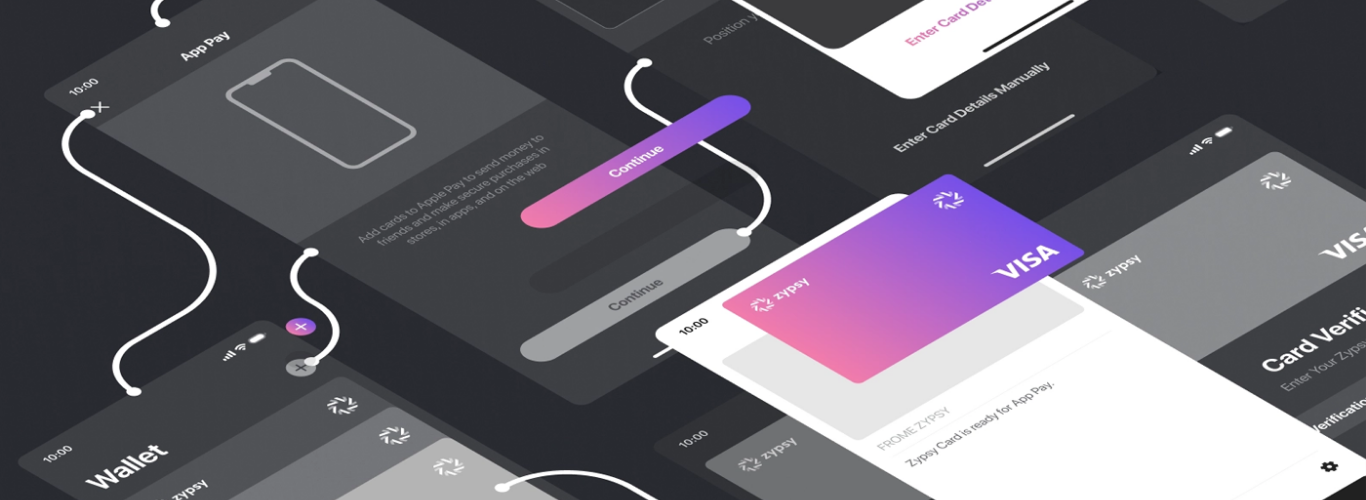In the dynamic world of digital product design, navigating the roadmap from conceptualization to execution is a complex process laden with numerous strategic decisions. One fundamental practice that often spells the difference between success and subpar outcomes is wireframing. Targeting the heart of user experience (UX) and functionality, wireframing is a pivotal step for businesses embarking on the digital transformation journey, particularly in the realm of creating corporate apps and digital products. This article delves into the essence of wireframing and its profound impact on your business and organizational operations.
Understanding Wireframing
Wireframing is a process where designers create overviews of interactive products to establish the structure and flow of possible design solutions, aligning them with both user and business needs1. In essence, a wireframe is a visual diagram that outlines the skeletal framework of a website, app, or other digital products, sometimes known as a page schematic or screen blueprint2.
The significance of wireframing emerges right from the exploratory phase of the product lifecycle where it serves as the initial iteration of a design, helping designers test the scope of the product, collaborate on ideas with each other as well as with business stakeholders, and identify business requirements3. By defining the structure of each screen and imparting functional characteristics to each element, wireframes play a crucial role in design structuring, ensuring that the digital product is on the right track towards achieving the desired look and functionality4. The wireframing process evolves through stages from low to high-fidelity, each step inching closer to the final product while aiding both designers and clients in visualizing their goals5.
This foundational step not only paves the way for a well-structured digital design but it also fosters effective communication and alignment among stakeholders, which is indispensable for large organizations aiming for successful digital innovation. Let’s explore how wireframing influences organizational efficiency, user experience design, mobile application development, and the overall success of your digital products.
Impact of Wireframing on Organizational Efficiency
In the vast realm of digital product design, wireframing emerges as a pivotal early-stage process, offering a skeleton view of the application or website’s layout, functionality, and flow. This simple yet significant step can profoundly impact the organizational efficiency in various dimensions, especially within large enterprises or corporations embarking on the journey of creating digital products or corporate apps. Here’s an exploration of how:
1. Wireframing Streamlines Communication Between Stakeholders:
Wireframes serve as a visual communication tool, simplifying the articulation of ideas, goals, and expected outcomes among different stakeholders within an organization. By offering a tangible visualization of the end product from the get-go, wireframing aligns expectations, aiding in engaging business stakeholders in an easily comprehensible manner. This clarity in communication is crucial in ensuring everyone is on the same page before diving deeper into the development phase, thus preventing misunderstandings or misalignments that could arise later on1.
2. Saving Time and Resources:
The early bird gets the worm, and in the digital design realm, early identification of potential problems is a boon. Wireframing facilitates the detection and rectification of issues at the outset, saving substantial time and resources that would otherwise be expended in alterations during the more costly development phase. By providing a clear picture of the design elements, functionalities, and user flow, wireframing allows for necessary changes to be made early on, thus saving time and money in the long run2.
3. Enhancing Collaboration Among Different Departments:
Collaboration is the cornerstone of successful project execution, more so in a multidisciplinary field like digital product design. Wireframing fosters collaborative efforts by providing a shared artifact for review, discussion, and iteration in real time. Digital tools used in wireframing often come with built-in collaboration features, enabling teams from various departments to review, comment, and iterate together. This shared understanding and continuous interaction significantly contribute to cross-functional alignment, ensuring that all departments are united in vision and approach towards the end goal34.
Wireframing, although a preliminary step, sets a strong foundation for the subsequent phases of digital product design. It acts as a catalyst in fostering clear communication, saving valuable resources, and enhancing collaboration, which are critical for the timely and successful delivery of corporate apps and digital products in large organizations.
Improving UX Design through Wireframing
Wireframing is an essential step in creating a user-centric design for digital products. Here’s how it significantly contributes to better User Experience (UX) Design:
1. Early Issue Identification:
Wireframing helps in identifying issues with user experience at an early stage, thus saving time and development costs. It allows designers and stakeholders to work on improving the user experience right from the start by predicting potential UX issues 1.
2. User-Centric Design:
The process encourages a user-centered design approach. By focusing on the users and their unique needs throughout each phase of the design process and manifesting that focus in the form of wireframes that can be observed, examined, and experienced, wireframing ensures that the final product is tailored to provide a good user experience2.
3. Visualization and Structure:
Wireframes plays a crucial role in visualizing and structuring the layout, functionality, and interactions of a digital product before diving into the development phase. This iterative process helps in refining user interfaces and experiences, ensuring that they meet user expectations before sinking time and money in development3. It allows fine-tuning of the experience, validation of assumptions, and lets designers catch design flaws in the early stages of the product’s lifecycle.
4. Ideation and Flexibility:
Wireframing provides a platform for exploring concepts without investing too much time in unproven ideas. It maintains flexibility while ideas are maturing, promoting a healthier ideation process among the design team4.
5. Early-Stage User Testing:
Engaging in user testing with wireframes is invaluable. Before getting deep into design or development, wireframes provide a tangible product for users to interact with. This early-stage testing identifies potential usability issues, layout problems, or unclear instructions, thus informing the design process with valuable user feedback5.
The Role of Wireframing in Service Design
Wireframing also plays a significant role in service design by offering visual representations that help in understanding customer interactions and the overall customer journey. In the case of service design the “wireframes” drawn for the overarching experience or the non-digital aspects are called “service blueprints”. These visualize the service processes, touchpoints, user interactions, and potential fail points, contributing to more human-centric service design. The value of blueprints in service design is manifested in:
1. Communicating Ideas:
Blueprints act as a common language that facilitates communication among stakeholders, designers, and developers, making it easier to share and understand ideas.
2. Aligning Stakeholder Expectations:
By visualizing the design early on, creating what is called the “minimum viable service”, service blueprints help align stakeholder expectations, ensuring everyone is on the same page regarding the design direction.
3. Customer Journey Mapping:
Through blueprinting, it’s possible to map out the customer journey, identifying touchpoints, bottlenecks, fail points, possible areas of improvement, allowing designers and stakeholders alike to understand how customers interact with the service at different stages.
Just like wireframing in the context of UX design, blueprints in service design are indispensable in developing customer-centric services. By integrating wireframing and blueprinting into the design process, organizations are better positioned to create services that meet user expectations and business objectives alike.
Tailoring Corporate Apps to Meet Business Objectives:
Wireframing plays a crucial role in the development of corporate apps and digital products, laying the groundwork for effective design and functionality tailored to meet business objectives. Here is how wireframing significantly impacts mobile application development, especially in the context of corporate apps:
1. Understanding Business Requirements:
The initial step in wireframing is to understand the client’s requirements, which sets the foundation for aligning the app design with the business goals. Knowing the purpose of the app, the different types of users, and the expected user flows is essential as it guides the layout of elements on the page, determining what should take precedence and be given screen real estate1. Wireframes give you the chance to test that your designers are aligned on your vision and needs, and gives you the opportunity to dial back any false ideas or inaccurate directions.
2. Planning Information Architecture:
With a clear understanding of the app’s purpose, wireframing helps in planning the information architecture and is a crucial component thereof, which is crucial for designing an app that meets the business objectives1.
3. Focus on Structure and Functionality:
Wireframing emphasizes the structure and functionality of the app before the distraction of visuals comes into play2. If the structure is fundamentally broken, no amount of glitter in the visuals will fix it, and wireframes give you the opportunity to see the bare structure to identify any areas that need improvement.
4. Preconceiving Visual and Interactive Elements:
Wireframes provide a visual representation, enabling developers to preconceive the visual and interactive elements within the app. This insight into how the interactive elements function significantly enhances the app’s functionality3, and gives developers a heads-up of what’s to come, allowing them to plan ahead and start building their code structure and backend.
5. Designing for Enjoyability, Satisfaction, & Retention:
Wireframes allow the creation of a user-centered design that prioritizes user needs and intended user journeys, structuring the product’s features to target user engagement and satisfaction. A well-designed interface and wireframe make the app more enjoyable and satisfying to use, which in turn, increases user engagement4. Good interface design through wireframing can also improve user retention by creating an app that is easy to use and provides a positive user experience4.
6. Incorporating Interactivity and Engagement Elements:
Wireframing allows for the inclusion of interactivity and engagement elements, encouraging users to engage more with the app5. Though this is usually relegated to high-fidelity wireframes, which might appear later in the product design process, and might even include a taste of the visual layer, giving a near-accurate simulation of the finished product.
Through the wireframing process, corporate apps can be designed to align with business objectives, offer enhanced functionality, and provide an engaging user experience. This approach serves as a catalyst for the successful development of corporate apps and digital products.
Success Stories: Wireframing in Action
In the exploration for real-world examples illustrating the impact of wireframing on enterprise-level or large organizations, this case study shows how wireframing played a crucial role in defining and visualizing enterprise knowledge graphs.
Defining Enterprise Knowledge Graphs:
- Company: Enterprise Knowledge
- Scenario: Utilizing wireframing helped in demystifying the conceptual and practical applications of knowledge graphs for organizational stakeholders. This exercise was crucial in articulating the value and potential implementations of knowledge graphs, thereby aiding in the establishment of a foundational basis for more sophisticated knowledge management and data initiatives like smart search or AI-driven capabilities.
- Impact: Through wireframing, the stakeholders could visualize the use cases and the potential value brought about by implementing knowledge graphs. For instance, wireframing facilitated the articulation of use cases like identifying experts in a specific field, accessing comprehensive information on a product category, and analyzing responses of financial institutions on a regulatory form. These scenarios were depicted through wireframes which helped in both conceptual understanding and practical visualization of how the knowledge graphs could be utilized1.
Wireframing is evidently a pivotal step in the design and development process of digital products, particularly in aligning stakeholder expectations, improving user experience, and facilitating effective communication across different organizational units. The mentioned example provides a glimpse into the practical utility and impact of wireframing in corporate digital products.
Wireframing Tools and Technologies
Using the right tools can significantly streamline the wireframing process. Here are some of the top wireframing software for enterprise businesses:
- Miro: A collaborative online whiteboard platform ideal for teams.
- Figma: Known for its powerful cloud-based design software.
- Lucid Visual Collaboration Suite: A comprehensive suite for visual collaboration.
- Freehand by InVision: Offers infinite whiteboard spaces, ideal for cross-collaborative teams.
- Balsamiq: Simplifies the design process by offering drag-and-drop elements for creating wireframes.
- OmniGraffle: Known for its diagram design features enabling you to create precise, beautiful graphics.
- Sketch: A design toolkit built to help you create your best work from your earliest ideas, through to final artwork.
- Moqups: An all-in-one online design platform that offers a streamlined workflow from initial ideas to final deliverables6.
Employing the right practices and leveraging robust wireframing tools can significantly impact the efficiency and effectiveness of the design process in large organizations. By optimizing the wireframing process, businesses can ensure that all stakeholders have a clear understanding of the project goals, thereby minimizing miscommunications and accelerating the project timeline.
Future Trends in Wireframing
Predicting the precise future trends in UX wireframing for app design can be a bit challenging as it’s a field that’s continually evolving with technology and user expectations. However, based on the recent trends and the broader shifts in the UX design landscape, here are some anticipated trends in UX wireframing for app design:
1. No-code Tools:
The rise of no-code tools is expected to continue, enabling designers and stakeholders to quickly create wireframes that mimic the product’s functionality without any coding knowledge. These tools can simplify the wireframing process, making it more accessible and efficient1.
2. Motion Design and Gestural Interfaces:
There’s an anticipated focus on enhancing ease of use through motion design and gestural interfaces. Wireframes might evolve to incorporate motion and gesture elements to provide a clearer understanding of the intended user interactions and transitions within the app2.
3. Interactive Elements:
The integration of interactive elements like hover effects in wireframes is already taking place in high-fidelity wireframes. As design tools incorporate more AI and no-code features, creating these interactions might be more prevalent as they will be much easier and faster to create. These elements can help in creating a more engaging and informative wireframing experience, providing better insights into how the final app will interact with the users3.
4. UX Designers Specialized in Wireframing:
As the field of UX design becomes more specialized, wireframing may also see a trend towards specialization, where wireframes are created by designers with specialized knowledge in certain areas like VR/AR, 3D interfaces, or AI2.
5. AI-Assisted Design:
Artificial Intelligence could play a role in assisting designers during the wireframing process, providing design suggestions, automating routine tasks, and even generating design elements based on certain criteria or past user behaviors4. Based on our observation in the closing months of 2023, this is already possible and is bound to further increase in the future.
6. Enhanced Visual Design:
Visual design trends such as bold layouts, competing elements, and varied typography may influence wireframing, pushing towards more visually rich wireframes that provide a closer representation of the final visual design of the app5.
7. User-Centric Wireframes:
The emphasis on creating user-centric designs is likely to reflect in wireframing trends as well. Wireframes might evolve to include more user-centric elements, focusing on enhancing user experience from the wireframing stage itself.
These trends reflect a broader shift towards creating more intuitive, interactive, and user-centric designs right from the wireframing stage, leveraging advanced tools and technologies to improve the design process and the quality of the final digital products.
Conclusion
Wireframing is not just an exercise in design, it’s a dialogue between business strategy and user experience, a narrative that eloquently articulates the aspirations of a brand while catering to the expectations of the user. As we’ve journeyed through its multifaceted impact on organizational efficiency, user experience enhancement, and mobile application development, the pivotal role of wireframing in pioneering success in corporate digital product design is unequivocal.
We invite the ambitious leaders of today’s enterprises and organizations to embrace wireframing as a linchpin in their digital innovation endeavors.
Engage with us to elevate your digital product design strategy, and let’s sculpt the future of your corporate digital landscape, one wireframe at a time. Your voyage towards a robust digital identity begins with a single line, a wireframe that holds the promise of infinite possibilities and the blueprint of your success.








